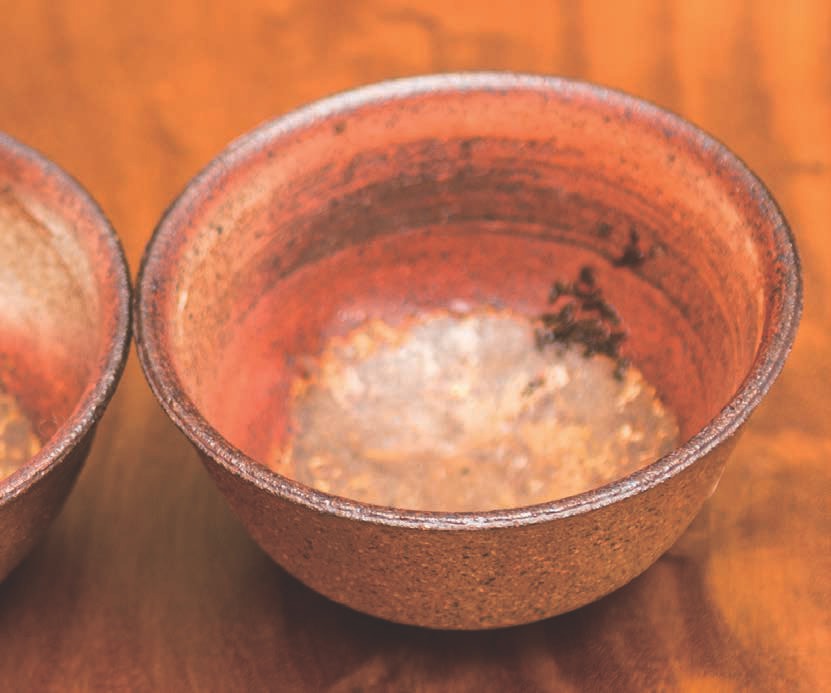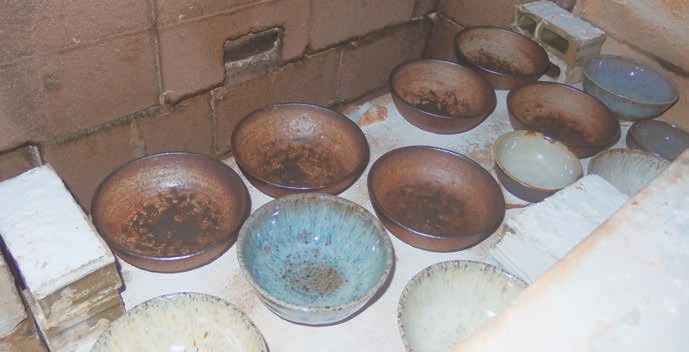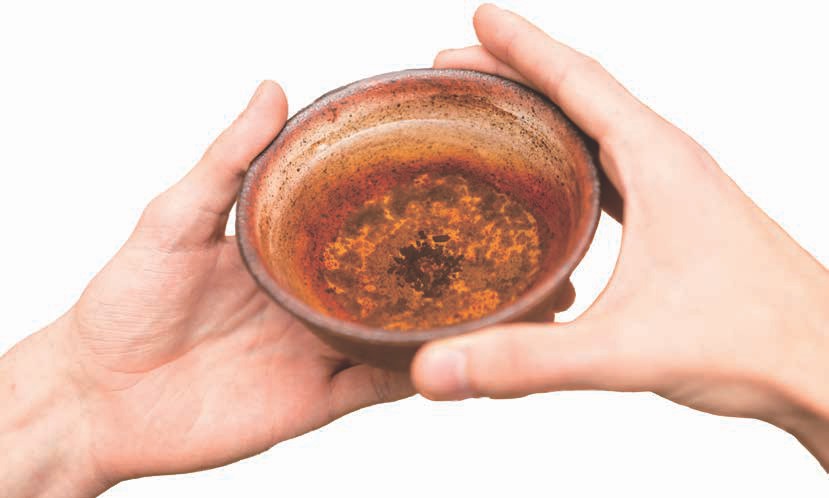
 |
|

Let me share some magic with you, an alchemy of tea and teaware - Earth, Sun, Water and Fire all dancing in the wizardry of a wood-fired kiln. Although I know some of the science behind making ceramic bowls, the process isn't any less magical to me. And a tea ash bowl shines especially bright with allegory and poetry, for each of these ash bowls is a journey of minerals from the jungle undergrowth of Yunnan, the cliffs of Wuyi or crags of Taiwan which have been mixed with my local clay and fired in wood, forming bowls that return to the tea space and brew more tea from the jungle undergrowth of Yunnan... Holding such a bowl, you sense that these minerals aren't just in the tea you drink - you can also appreciate them with your eyes and hands. When looking into an empty ash bowl, or running your fingers along its rim, when cleaning the bowl or getting ready for another tea session, you are appreciating tea leaves in a whole new way.
I am going to give you a glance inside a potter's kitchen with a bit of theory. I hope this will be as fascinating to you as it is to me. As Wu De often says, "knowing how things work should enhance, not detract, from the sense of awe we feel for them." There is indeed great enchantment in tea ash bowls...
Potters have been using ash from many different kinds of plants for more than three thousand years. The fact is that one of the first glazes ever used was made quite simply out of clay, ash and water. How does this work? What is glaze, anyway? Succinctly, glaze is a coating fused to a ceramic body during firing. Glazing serves to waterproof, decorate and/or give a ceramic piece greater utility. From a chemical point of view, glazes are vitreous, because they are melted silica (SiO2), similar to glass. Silica itself is a refractory material (its melting point is very high), so potters have to lower this melting point by adding fluxes, chemicals like NaO2, KO2, CaO2. Also, to keep the glaze affixed to the ware, you need some alumina (Al2O3) in your glaze mixture. Potters in the Song Dynasty didn't have a laboratory to prepare and measure all this, nor oxides or carbonates in their backyards. They had clay and rocks, which contain silica and alumina. And, more importantly for this article, they also had wood ash from their fireplaces, which is usually high in fluxes. Over generations, potters learned how to mix and combine these elements to prepare the right composition, creating a wide variety of glazes in which ash plays a central role.

With Fire as the teacher of all potters throughout the millennia, we've learned how to use ceramics to connect to Great Nature.
If you chemically analyze any ash, you will find the minerals needed to blend a glaze - silica, alumina and fluxes, all in different ratios. A wood ash contains a high amount of fluxes (where calcium is very often the main one), and ashes from herbaceous plants are much higher in silica. But even the oak or pine from the forest near my home have different and unique mineral compositions when compared to other oaks and pines around the globe. Why? Well, all those minerals are the bones of the plant. To build their bodies, plants are using minerals from the soil and rocks around their roots. In other words, the minerals from the ground are drunk up by the veins of the oak tree, becoming the tree itself. And since the soil and minerals of every place are different, the minerals in different trees will also be unique. The ash left after the wood has been burned is composed of the very minerals the tree absorbed when it was alive. When we use pine to heat our house, for example, the only thing that does not burn - what we call ash - are those minerals.
Throughout the ages, whenever potters have looked for ash to use as raw material for creating glazes, they most often chose the ash that was most accessible to them - wood from their kitchen, hay, straw, etc. Of course, it is nice to think about glaze made from roses. But you would need close to ten kilograms of dry rose petals to have enough glaze for just a few bowls. This impracticality held me back from trying to make glaze from tea ash, as it held other potters back from using aesthetically or energetically pleasing plants in the past. But then, one day, we started to collect our spent leaves. Day by day, bit by bit, this pile grew. And then some of our friends started to do the same, bringing bags of dry leaves when they came over for tea. After a year, we had around five kilograms of tea leaves, which was enough to start our first experiments.
I burnt the leaves as well as possible, mixed the ash with water and sieved it through a fine mesh used for making glazes. We ended up with 500ml of clean ash glaze, thick enough to glaze a few cups and bowls. Tea creates quite an interesting glaze, surprisingly dark and matte. After a few more tests, the original 500ml was almost gone, so I decided to try a different approach. I knew that there are many tea lovers out there like you, who would like to have a bowl glazed in tea leaves. And the 'five kilos for a few bowls' worth of glaze' approach would make them too special and rare. I therefore started to put dry leaves directly into the bowls and let the kiln fire do its magic. Different clays reacted differently to this method, which meant lots of trial and error. In the end, the kiln taught me to use a mixture of rough stoneware, using white clay as slip inside the bowls, along with the dry tea leaves. The white clay inside serves as a canvas onto which the fire and ash can paint - the Tea spirit can unfold and leave its traces for us to decipher through the tea liquor when we hold the bowls in our tea sessions.


I believe that, like myself, many of you can enjoy the symbolism and metaphorical power of using tea leaves to fire tea bowls. The mineral footprints left in each bowl have then traveled from the origins of our beloved tea trees to the very bowls we use to consume our tea, creating a wonderful cycle that I feel expresses the changes of Great Nature Herself.
Nowadays, I put a few bowls full of leaves into each kiln we fire. The amount is still limited, so I've decided that all of these special bowls will travel to the Tea Sage Hut, for all the visitors and tea pilgrims who wind up there to use, and eventually as they accumulate more, to take home. I hope that this not only encourages a chance to enjoy these bowls, and all they represent, but also helps support the Center. If this is the last excuse you need to make your way there, I would be honored to have my bowls help invite more people to a place that has meant a lot to me and my tea journey!



